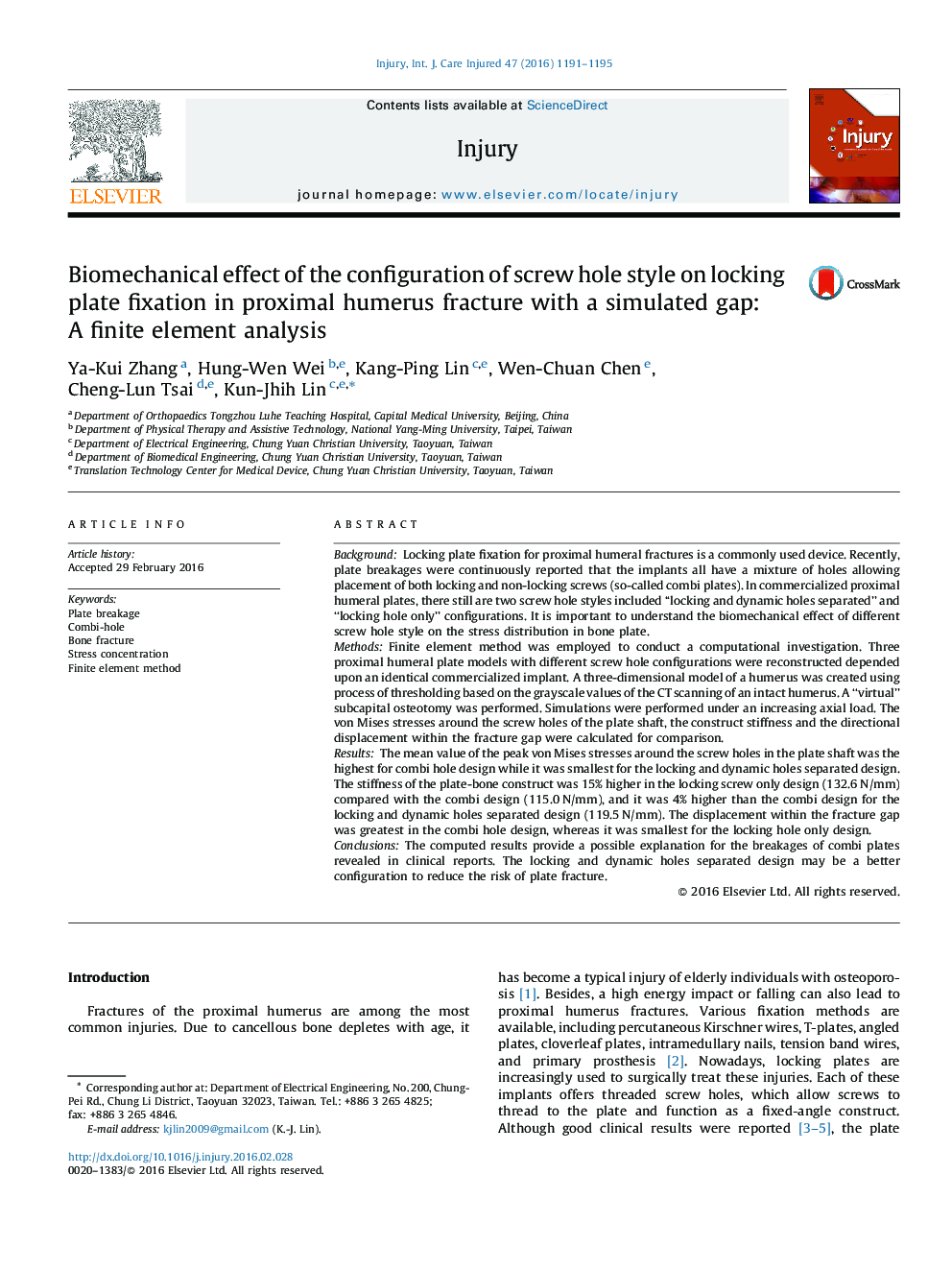| کد مقاله | کد نشریه | سال انتشار | مقاله انگلیسی | نسخه تمام متن |
|---|---|---|---|---|
| 3238831 | 1205975 | 2016 | 5 صفحه PDF | دانلود رایگان |
BackgroundLocking plate fixation for proximal humeral fractures is a commonly used device. Recently, plate breakages were continuously reported that the implants all have a mixture of holes allowing placement of both locking and non-locking screws (so-called combi plates). In commercialized proximal humeral plates, there still are two screw hole styles included “locking and dynamic holes separated” and “locking hole only” configurations. It is important to understand the biomechanical effect of different screw hole style on the stress distribution in bone plate.MethodsFinite element method was employed to conduct a computational investigation. Three proximal humeral plate models with different screw hole configurations were reconstructed depended upon an identical commercialized implant. A three-dimensional model of a humerus was created using process of thresholding based on the grayscale values of the CT scanning of an intact humerus. A “virtual” subcapital osteotomy was performed. Simulations were performed under an increasing axial load. The von Mises stresses around the screw holes of the plate shaft, the construct stiffness and the directional displacement within the fracture gap were calculated for comparison.ResultsThe mean value of the peak von Mises stresses around the screw holes in the plate shaft was the highest for combi hole design while it was smallest for the locking and dynamic holes separated design. The stiffness of the plate-bone construct was 15% higher in the locking screw only design (132.6 N/mm) compared with the combi design (115.0 N/mm), and it was 4% higher than the combi design for the locking and dynamic holes separated design (119.5 N/mm). The displacement within the fracture gap was greatest in the combi hole design, whereas it was smallest for the locking hole only design.ConclusionsThe computed results provide a possible explanation for the breakages of combi plates revealed in clinical reports. The locking and dynamic holes separated design may be a better configuration to reduce the risk of plate fracture.
Journal: Injury - Volume 47, Issue 6, June 2016, Pages 1191–1195
